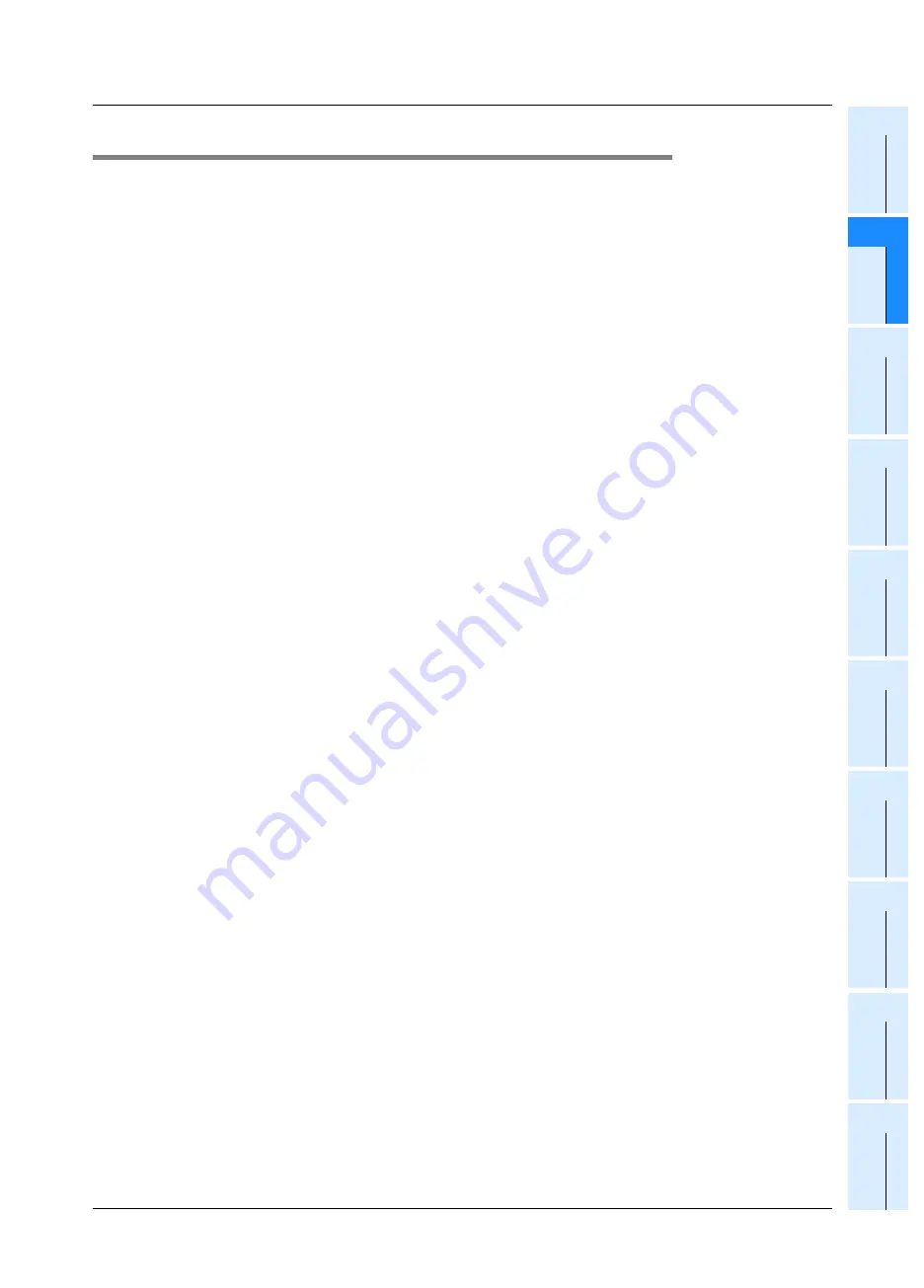
31
FX
3U
/FX
3UC
Series Programmable Controllers
Programming Manual - Basic & Applied Instruction Edition
2 Overview (Sequence Program)
2.5 Introduction of Devices Constructing PLC
1
In
troduct
io
n
2
Ov
e
rv
ie
w
3
In
st
ru
ct
ion
Li
st
4
D
evi
ce
s
in
De
ta
il
5
Speci
fied t
h
e
D
evi
ce &
C
onst
a
nt
6
Bef
o
re
Pr
ogr
a
m
m
ing
7
Bas
ic
In
st
ru
cti
o
n
8
FNC0
0
-FNC0
9
P
ro
g
ra
m F
lo
w
9
FNC1
0
-FNC1
9
M
ov
e
&
C
om
par
e
10
FNC
20-
FNC
2
9
Ar
ith.
&
Logi
c
O
per
at
io
n
2.5.2
Device list
1. Input relays (X) and output relays (Y)
→
Refer to Section 4.2.
• Input relay numbers and output relay numbers
in octal are assigned to each main unit in the
way "X000 to X007, X010 to X017 …, Y000 to
Y007, Y010 to Y017 …"
The input relay (X) numbers and output relay
(Y) numbers in extension units and extension
blocks are also serial numbers in octal
respectively in the order of connection to the
main unit.
• A digital filter is applied to the input filter of
specific input relays, and the filter value can
be changed by a program. Accordingly, for a
purpose requiring high speed receiving,
assign such input relay numbers.
(Refer to explanation of filter adjustment, input
interrupt, high speed counter, various applied
instructions, etc.)
2. Auxiliary relays (M)
→
Refer to Section 4.3.
• Relays built into the PLC are auxiliary relays,
and are used for programs. Different from I/O
relays, auxiliary relays cannot receive external
inputs or directly drive external loads.
• There are latched (battery backed) type relays
whose ON/OFF status is stored even if the
PLC turns OFF.
3. State relays (S)
→
Refer to Section 4.4.
• State relays are used in the step ladder or as
process numbers in the SFC expression.
• When a state relay is not used as a process
number, it can be programmed as a general
contact/coil in the same way as an auxiliary
relay.
• State relays can be used as annunciators for
external fault diagnosis.
4. Timers (T)
→
Refer to Section 4.5.
• A timer adds and counts clock pulses of 1, 10
or 100 ms, and its output contact turns ON or
OFF when the counted result reaches a
specified set value.
A timer can count from 0.001 to 3276.7
seconds depending on the clock pulse.
• The timers T192 to T199 are dedicated to
subroutines and interrupt routines.
The timers T250 to T255 are retentive type
base clock timers for 100 ms pulses. It means
that the present value is retained even after
the timer coil drive input turns OFF. And when
the drive input turns ON again, a retentive type
timer will continue its counting from where it
left off.
5. Counters (C)
The following types of counters are provided, and
can be used in accordance with the purpose or
application.
1) For latched (battery backed up) counters
→
Refer to Section 4.6.
Counters are provided for internal signals of
the PLC, and their response speed is usually
tens of Hz or less.
- 16-bit counter: Provided for up-counting,
counting range: 1 to 32767
- 32-bit counter: Provided for up-counting
and down-counting, counting range:
−
2,147,483,648 to +2,147,483,647
2) For latched (battery backed up) high speed
counters
→
Refer to Section 4.7.
High speed counters can execute counting at
several kHz without regard to operations in
the PLC.
- 32-bit counter: Provided for up-counting
and down-counting, counting range:
−
2,147,483,648 to +2,147,483,647 (1-
phase 1-counting, 1-phase 2-counting and
2-phase 2-counting), assigned to specific
input relays
















































